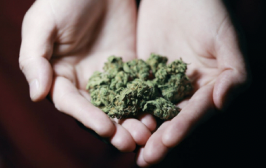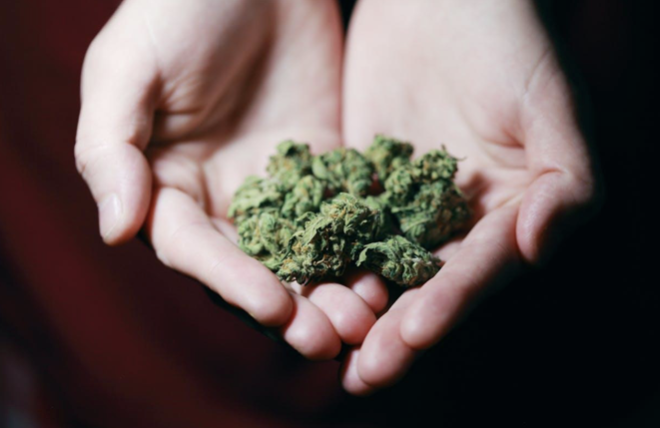As commercial cannabis cultivation gains momentum in various regions, more individuals are exploring this industry as a business opportunity. However, entering the field involves more than a basic interest in cannabis. It requires understanding the specific needs of the plants, navigating the legal landscape, and mastering the technical aspects of running a successful cultivation operation.
Commercial cultivation differs significantly from growing cannabis for personal use due to the higher levels of precision, efficiency, and expertise needed. Whether you’re a newcomer or an experienced grower looking to scale up, understanding these fundamentals is essential. In this blog, we will share key things to know about commercial cannabis cultivation, providing a foundation for those interested in entering this expanding market.
Understanding Cannabis Strains and Their Needs
Selecting the right cannabis strains is essential in commercial cultivation, as different strains have unique needs for light, nutrients, and growing conditions. Some strains are easier to cultivate, while others require more expertise. Research strains that fit your cultivation goals and market demand, whether for medicinal or recreational use. Understanding each strain’s needs helps optimize growth and yield, making your operation more successful.
Essential Equipment for Commercial Cultivation
Running a successful commercial cannabis cultivation operation requires specialized equipment. Among the critical tools is a commercial cannabis trimmer, which processes large quantities efficiently. These trimmers streamline the trimming process, providing consistency and saving valuable time and labor. In a commercial setup, time is money, and having the right equipment can significantly improve productivity.
In addition to trimming tools, other essential equipment includes proper lighting systems, which are vital for indoor grows. High-intensity discharge (HID) lights, LED grow lights, or fluorescent lights are common choices, each offering specific benefits depending on your setup. Effective lighting is necessary for your cannabis plants to receive the right amount of light for photosynthesis, promoting healthy growth.
Irrigation systems are equally important, as they automate the watering process and reduce the risk of over- or under-watering. Drip irrigation systems, in particular, are popular in commercial cultivation because they deliver water directly to the roots, conserving water and ensuring the plants get what they need.
Creating the Ideal Growing Environment
Creating the ideal growing environment is vital for the health and yield of cannabis plants. For commercial operations, controlling temperature, humidity, and air circulation is key to preventing issues like mold or stunted growth. Indoor setups rely on HVAC systems, dehumidifiers, and fans to maintain these conditions. Proper ventilation ensures fresh air flow and prevents excess heat or humidity. Greenhouse operations also need ventilation and shading systems to manage temperature and light. Whether indoors or in a greenhouse, consistently monitoring and adjusting these factors is key for successful cannabis cultivation.
Legal and Regulatory Considerations
The cannabis industry is heavily regulated, and laws vary significantly from one region to another. Before starting your operation, it’s essential to understand the legal requirements in your area. This includes obtaining the necessary licenses, complying with zoning laws, and adhering to health and safety standards.
Licensing is often the first step, and the process can be complex and time-consuming. You’ll need to submit detailed applications, provide proof of compliance with local regulations, and often undergo background checks. Once you have obtained the necessary licenses, it’s important to maintain compliance with ongoing regulations, which can include regular inspections and reporting requirements.
Staying informed about changes in legislation is also important, as the cannabis industry is still evolving. Laws can change quickly, and staying up to date helps you avoid fines, penalties, or even the shutdown of your operation. Consulting with legal professionals who specialize in cannabis law can provide valuable guidance and help make sure your business remains compliant with all applicable regulations.
Managing Costs and Budgeting
Managing costs in commercial cannabis cultivation requires careful budgeting to cover expenses like equipment, utilities, labor, and materials. Consider all costs, including seeds, nutrients, and energy consumption, while planning for unexpected expenses like repairs. To reduce costs, optimize resource usage by implementing energy-efficient lighting and irrigation systems. Regularly review and adjust your budget as your operation grows to maintain financial sustainability and identify areas to save without compromising quality.
Cultivation Techniques for Maximum Yield
Maximizing yield is a primary goal for any commercial cannabis operation. There are several cultivation techniques that can help boost plant growth and productivity. One of the most common methods is topping, which involves cutting the main stem of the plant to encourage lateral growth. This results in a bushier plant with more bud sites, ultimately increasing the overall yield.
Pruning is another technique that involves removing unnecessary leaves and branches to improve light penetration and airflow. By trimming away excess foliage, you allow more light to reach the lower parts of the plant, which can lead to better growth. Trellising, which involves using a support structure to guide the plant’s growth, can also be beneficial. This technique helps distribute the plant’s weight more evenly, preventing branches from breaking and allowing for more even light distribution.
Quality Control and Testing
Maintaining high quality is vital in commercial cannabis cultivation. Regular testing for contaminants such as pesticides, mold, and heavy metals helps confirm that your product is safe for consumption. In addition, testing for cannabinoid and terpene levels provides valuable information about the potency and effects of your cannabis, which is important for both compliance and marketing.
Quality control measures should be implemented throughout the cultivation process, from seed to sale. This includes monitoring environmental conditions, using clean and sterile equipment, and following best practices for harvesting and processing. By prioritizing quality control, you can be confident that your final product meets regulatory standards and consumer expectations.
Marketing and Distribution
Marketing and distribution are critical once your cannabis is ready for sale. A strong brand identity is important in a competitive market, highlighting what sets your product apart, such as cultivation methods or quality. Understanding your target market and tailoring your marketing efforts, whether through social media, industry events, or retailer partnerships, is key. Reliable distribution channels are necessary to get your product to the market efficiently. By focusing on both branding and distribution, you can establish a strong presence and grow your cannabis business.
All in all, the cultivation of commercial cannabis is a complex undertaking that requires careful planning, attention to detail, and a deep understanding of the plant’s needs. While the industry offers significant potential for economic growth, it’s important to approach it with a realistic perspective and a commitment to responsible practices. By following the key points outlined in this blog, you can increase your chances of success and contribute to the development of a sustainable and thriving cannabis industry.





















